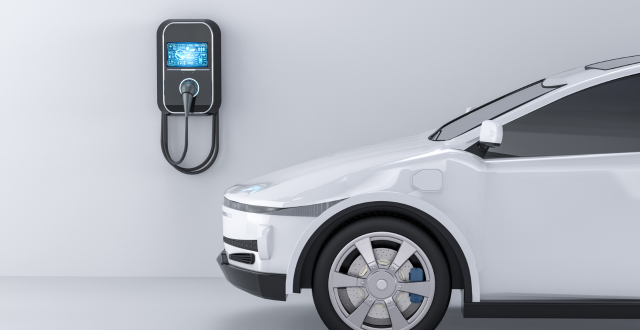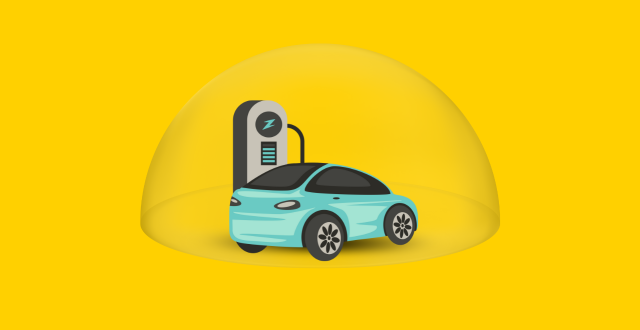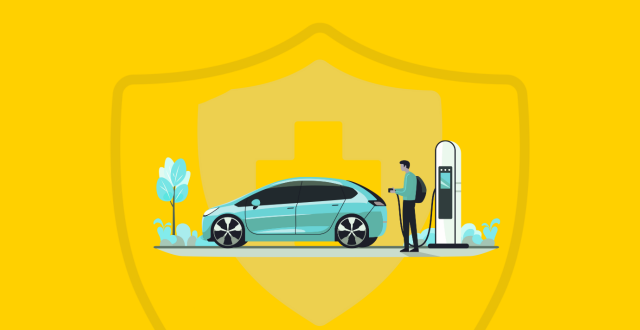10/06/2025

Electric vehicles (EVs) are no longer a niche option in Singapore, and they're becoming a major force reshaping the automotive landscape. Backed by government incentives and expanding charging infrastructure, more drivers are making the switch to electric. But with this shift comes new considerations, especially when it comes to insurance.
EV insurance isn’t the same as traditional petrol or diesel car insurance. The way EVs are built, maintained, and repaired introduces new risks and repair requirements that insurers need to account for. Understanding these differences is crucial if you want to protect your investment properly.
In this guide, we'll cover the seven key things you need to know about EV insurance in Singapore, including:
- EV growth in Singapore and the supporting infrastructure
- Unique risks associated with EV ownership
- Challenges faced by traditional workshops in repairing EVs
- The importance of choosing the right EV insurance
If you own an EV or are planning to, knowing how to insure it correctly can make all the difference.
#1 The Rise of Electric Vehicles (EVs) in Singapore
Electric vehicles are reshaping the way Singapore drives. Along with the effect of strong government support aligned with the national agenda to achieve net zero emission, falling vehicle prices, and better charging infrastructure are making EVs a more practical choice for individuals and businesses alike. As more EVs hit the roads, understanding how they differ from traditional vehicles and how they're insured becomes increasingly important.
EV Growth and Government Support
Singapore’s government has taken an active role in promoting EV adoption. Incentive schemes such as the Electric Vehicle Early Adoption Incentive (EEAI) and the Vehicular Emissions Scheme (VES) offer rebates and tax savings to encourage drivers to make the switch.
Recent data from the Land Transport Authority (LTA) shows a steady rise in EV registrations over the past few years. Between 2014 and 2024, EV registrations surged from just 1 to 26,225, reflecting a compound annual growth rate (CAGR) of approximately 176.61%. This rapid growth is supported by a wider variety of EV models across different price points, making EV ownership increasingly accessible to a broader range of drivers.
Under the Singapore Green Plan 2030, the country has committed to accelerating sustainable transport goals, including wider EV adoption. Singapore is on the path to 100% cleaner-energy by 2040.
Infrastructure Supporting EV Growth
According to the Land Transport Authority (LTA), Singapore had around 13,800 registered EV charging points islandwide as of 2024. Charging infrastructure has been steadily rolled out across public HDB carparks and private premises, with around 1,000 HDB carparks — roughly half of all HDB carparks — now equipped with charging points.
EV-Electric Charging Pte Ltd (EVe), a subsidiary under the Land Transport Authority (LTA), is on track deploy EV charging points across all HDB towns by the end of 2025. This expanded network supports broader access to public charging for EV drivers living in HDB estates.
Home charging solutions are also becoming more common, particularly in private residences and condominiums. However, it's important for EV owners to check with their insurers whether home-charging equipment, like wall-mounted chargers, is covered under their policy, as this can differ between plans.
#2 What is EV Car Insurance and Why Do You Need It?

Electric vehicle (EV) insurance is designed to address risks that are specific to EV ownership, such as battery-related damage, specialist repair needs, and charging equipment issues. These policies may offer protections that differ from standard petrol or diesel car insurance, depending on the insurer and coverage selected.
General Key Differences Between EV Insurance and Traditional Car Insurance
Here’s a quick comparison to highlight how EV insurance generally differs from traditional car insurance:
| Aspect | Traditional Car Insurance | EV Car Insurance |
|---|---|---|
| Coverage for Battery | N/A | Cover against accidental loss of or damage by fire arising from overheating of the EV battery |
| Repair Costs | Relatively lower | Relatively higher (limited parts availability and added complexity of EV-specific repairs) |
| Charging Equipment | Not covered | Cover accidental damage for Private Electric Chargers |
| Fire Risks | Accidental loss or damaged by fire | Lithium-ion battery fires pose unique challenges (e.g. thermal runaway), which are considered in insurance underwriting. Specific coverage may be required depending on the policy |
| Workshop Availability | Widely Available | Limited EV-certified workshop |
| Breakdown Service | Standard Towing | Special towing procedures are needed to avoid battery damage |
Choosing the right EV insurance means looking carefully at what’s covered — not every policy handles EV-specific risks the same way.
#3 How Much is EV Car Insurance?
Electric vehicle insurance generally costs more than insurance for petrol or diesel cars. The higher costs are mainly driven by the price of EV replacement parts, such as the battery, the need for specialist repairs, and limited spare parts availability.
Liberty Insurance offers EV-specific cover under its Private Car policy and InsureMyTesla plan for Tesla owners in Singapore. EV-specific plans like this typically come at a higher cost compared to standard car insurance because they cover battery-related risks and access to specialised workshop repairs. Understanding why premiums are higher and how insurers calculate them can help you choose a policy that offers both value and protection.
Key Reasons EV Insurance Is More Expensive
1. Battery Replacement Coverage
An EV’s battery is its most expensive component. Depending on the model, replacing a battery can cost over $10,000. According to FindMyElectric, Tesla Model S battery replacements can range between US$12,000 to US$15,500. Given these high costs, battery coverage is crucial to avoid incurring massive out-of-pocket expenses due to accidental damage..
2. Charging Equipment Protection
EV policies may include cover for accidental damage to private EV chargers, caused by events such as fire or theft, depending on the policy wording. Coverage typically applies only if the charger is installed at your residence by an authorised dealer.
3. Fire and Thermal Runaway Risks
EV batteries pose unique challenges, such as thermal runaway — a chain reaction triggered when a battery cell overheats, releasing oxygen and igniting neighbouring cells. These fires are harder to suppress than petrol vehicle fires and may require more water to lower the temperature enough to stop the chemical process.
4. Towing and Roadside Assistance for EVs
EVs must be towed using flatbed trucks to avoid damaging the drivetrain or battery system. Specialised towing services cost more than standard vehicle recovery, which increases the overall cost of cover.
5. Specialised EV Repair Expertise
Not all workshops are equipped to repair EVs. Repairs often require technicians trained in high-voltage systems, as well as advanced diagnostic equipment. The shortage of certified EV mechanics adds to both labour costs and overall repair expenses.
6. Higher Risk of Total Write-Offs
If an EV’s battery is severely damaged, it may cost more to replace than the value of the car itself. This increases the likelihood of a total loss declaration and a higher payout by the insurer.
7. Limited Availability of Spare Parts
EV parts are still less widely available than those for petrol or diesel vehicles. This can result in longer repair times and higher replacement costs, both of which are factored into premium pricing.
Factors That Influence Your Premium
In addition to EV-specific risks, insurers also apply general risk factors to calculate your premium, whether you drive an EV or a traditional car:
- Car model and current market value: Higher-value vehicles cost more to insure due to their replacement and repair costs.
- Driver profile (age, experience, occupation): Your age, driving experience, and occupation can affect how risky you appear to insurers.
- Types of cover: Comprehensive policies cost more than basic third-party plans but offer much wider protection.
- Claims history: A history of frequent or high-value claims increases your premium.
- No-Claim Discount (NCD) status: Maintaining a clean driving record without claims allows you to earn discounts on your premium, up to 50% with some policies in Singapore.
#4 How to Choose an EV Car Insurance Plan?

Choosing the right EV insurance plan takes more than just comparing prices. Electric vehicles come with unique risks and maintenance needs, so it’s important to select an insurer who truly understands the difference.
When evaluating your options, here’s what to look for:
1. EV-Specific Coverage
Your policy should offer comprehensive protection tailored to EVs. This includes cover for battery replacement, charging equipment such as home chargers and public cables, and potential electrical failures. Standard car insurance often doesn’t address these specific risks.
2. Customisation Options
Some policies offer customisable plans that allow adjustments to coverage based on driving habits or risk levels. Look for policies that allow you to adjust coverage based on your driving habits — for example, if you drive mostly short urban trips or require coverage for long-distance commuting. Customisable options let you control costs while staying properly protected.
3. Premium Costs
While price shouldn’t be your only consideration, it remains important. Compare premiums across insurers, but weigh them against the level of coverage provided. The lower cost policy may leave critical gaps in protection, particularly around expensive components like the battery.
4. Claims Process
A fast, transparent claims process can make all the difference when you need support. Choose an insurer known for clear claims procedures, easy documentation requirements, and efficient approvals. The last thing you want is delay or confusion when dealing with costly EV repairs.
5. Certified EV Repair Workshops
Not all mechanics are trained to work on electric vehicles. Make sure your insurer partners with certified EV repair workshops that have technicians qualified to handle high-voltage systems, battery repairs, and specialised diagnostics. This ensures your EV gets the proper care it needs.
6. Manufacturer-Approved Repairs
Repairs should meet your vehicle’s original manufacturer standards. Insist on cover that guarantees genuine parts and trained service providers. This helps maintain the safety, performance, and value of your EV.
7. Roadside Assistance for EVs
Breakdowns happen, and EVs require special handling. Flatbed towing is crucial to avoid damaging the drivetrain or battery system. Check that your insurer’s roadside assistance services are EV-friendly and ready to respond properly in an emergency.
Selecting an insurer with a dedicated EV repair network ensures smoother repairs, reduced downtime, and peace of mind.
Take the time to review each policy carefully and ask direct questions about EV-specific coverage before committing.
Now that you understand the key factors that influence EV insurance costs, it’s worth looking deeper at the core risks specific to electric vehicles. These technical risks — from battery systems to charging infrastructure — directly affect how EVs are insured and why specialised protection matters.
#5 Risks Associated with Electric Vehicles (EVs)
While electric vehicles are changing the future of transport, they come with a unique set of risks that affect both maintenance and insurance. Understanding these risks is critical if you want to protect your investment properly and avoid unpleasant surprises when something goes wrong.
Key Components of an EV & Their Impact on Repairs & Maintenance
- Battery System: The battery is the most valuable and expensive component of an EV, with replacement costs reaching tens of thousands of dollars. Over time, batteries naturally degrade, reducing driving range and vehicle value. Battery degradation is not covered under EV insurance, as it's treated as normal wear and tear. However, if a battery is damaged, for example, in a collision or due to overheating, it may trigger thermal runaway, a chain reaction that can lead to fire. Insurers recognise these risks and may influence how EV coverage is underwritten.
- Electric Motor and Power Electronics: Although EVs have fewer moving parts than petrol or diesel vehicles, their motors and power electronics are complex and costly to repair. Diagnosing and fixing faults often requires specialised tools and certified technicians. As a result, not all workshops are equipped to carry out EV repairs, contributing to higher repair costs and insurance premiums.
- Regenerative Braking System: EVs use regenerative braking to convert kinetic energy back into stored electricity, reducing wear on conventional brake components. While this system extends brake life, it requires EV-specific maintenance checks to ensure proper function. Failures in regenerative braking systems, if not properly maintained, can also lead to costly repairs.
- Charging Infrastructure: Charging an EV, whether at home or at public stations, introduces new risks. Faulty home chargers, incorrect installations, overcharging, or surges at public charging stations can damage the vehicle’s electrical systems. These incidents may not always be fully covered under basic insurance plans unless specific protection for charging equipment is included.
- Limited EV Repair Capabilities: In Singapore, not all workshops are equipped to repair EVs. Repairs often require isolation bays, high-voltage tools, and EV-certified mechanics. This shortage drives up repair costs and downtime, which in turn affects the cost of insurance coverage for EV owners.
#6 Why Traditional Workshops Struggle with EV Repairs
Electric vehicles (EVs) are reshaping how vehicles are repaired and maintained. While EVs offer cleaner technology and fewer mechanical parts, they introduce a new set of challenges for workshops. Many traditional mechanics are still adjusting to these demands, and that gap can directly affect your repair costs, downtime, and insurance needs.
EV Maintenance Requires a New Skillset
Although EVs have fewer moving parts than petrol or diesel cars, they come with far more complex electrical systems. Diagnosing issues requires a different approach, focusing on electronics, battery management, and software.
High-voltage battery repairs, in particular, demand certified technicians. Traditional mechanics who are skilled in combustion engines often lack the necessary training to work safely with battery systems operating at several hundred volts.
On top of this, many workshops don't yet have the specialised diagnostic tools needed to detect faults in software-driven components. Without the right equipment, even identifying a simple error can be difficult, leading to delayed repairs or incomplete fixes.
Shortage of EV-Trained Mechanics in Singapore
Transitioning from petrol and diesel expertise to EV-specific knowledge takes time, investment, and industry-wide upskilling. In Singapore, the number of technicians fully trained to service EVs is still limited compared to the rising number of electric vehicles on the road.
Not all repair shops are capable of handling EV battery issues. Some repairs require isolation bays, specialised safety gear, and precise battery diagnostics that only dedicated EV centres can provide.
Higher labour and training costs also make EV repairs more expensive. Certified technicians command higher wages, and workshops face increased overheads to maintain the necessary tools and certifications. All these factors contribute to the higher cost of EV insurance and the importance of choosing the right insurer with a proper EV repair network.
#7 How to Reduce Your EV Insurance Premiums
Electric vehicle insurance doesn’t have to break the bank. With the right approach, you can manage your premiums without compromising on essential cover. Here are a few strategies to help you lower your EV insurance costs:
Maintain a Clean Driving Record
Your driving history remains one of the biggest factors insurers use to assess risk. Avoid traffic violations, accidents, and claims wherever possible. A clean record helps you build No-Claim Discounts (NCD) over time, directly reducing your premium year after year.
Install Anti-Theft and Safety Features
Adding security enhancements such as advanced alarms, tracking systems, and immobilisers can lower the risk of theft, a key concern for high-value EVs. Some insurers offer discounts for vehicles equipped with approved anti-theft and safety features.
Opt for a Higher Excess
Choosing a higher excess (the out-of-pocket amount you agree to pay if you make a claim) can significantly lower your premium. Just make sure you're financially prepared to cover the excess if an accident does happen.
Consider Usage-Based Insurance (UBI) for Low-Mileage EVs
If you don't drive much — for example, if your EV is used mainly for short commutes or weekend trips — a usage-based insurance plan might save you money. Some insurers offer telematics-based policies where your premium is based on how much and how safely you drive, not just a flat rate.
Conclusion

Electric vehicle insurance isn’t the same as traditional car insurance. From costly battery replacements to specialised repairs and unique fire risks, EVs require a different level of protection.
Insurers that offer EV-specific policies typically include cover for high-voltage components, access to certified EV repair workshops, and EV-compatible roadside assistance. This ensures key systems — like the battery and charging equipment — are properly protected, and that any repairs are carried out by professionals trained to handle electric vehicles.
Protecting your EV investment begins with choosing the right insurance. A policy tailored to electric vehicles reduces the risk of major out-of-pocket expenses, especially in the event of battery or electrical system failure.
Get the right protection for your electric car—reach out to your Liberty representative for a personalised quote today.
Disclaimer: The information provided in this article is for general information only and is not intended to provide a complete descriptions of all terms, exclusions, and conditions applicable to every insurance product or service offered by Liberty Insurance. Liberty Insurance makes no representations or warranties of any kind whatsoever that the information and materials contained on our website are suitable for your needs, are complete, timely, reliable, or are free from errors, inaccuracies or typographical mistakes. Please refer to our website terms and conditions (Terms and Conditions | Liberty Insurance Singapore) for the terms of use and refer to the policy wordings of the products for more details on the relevant terms and conditions

